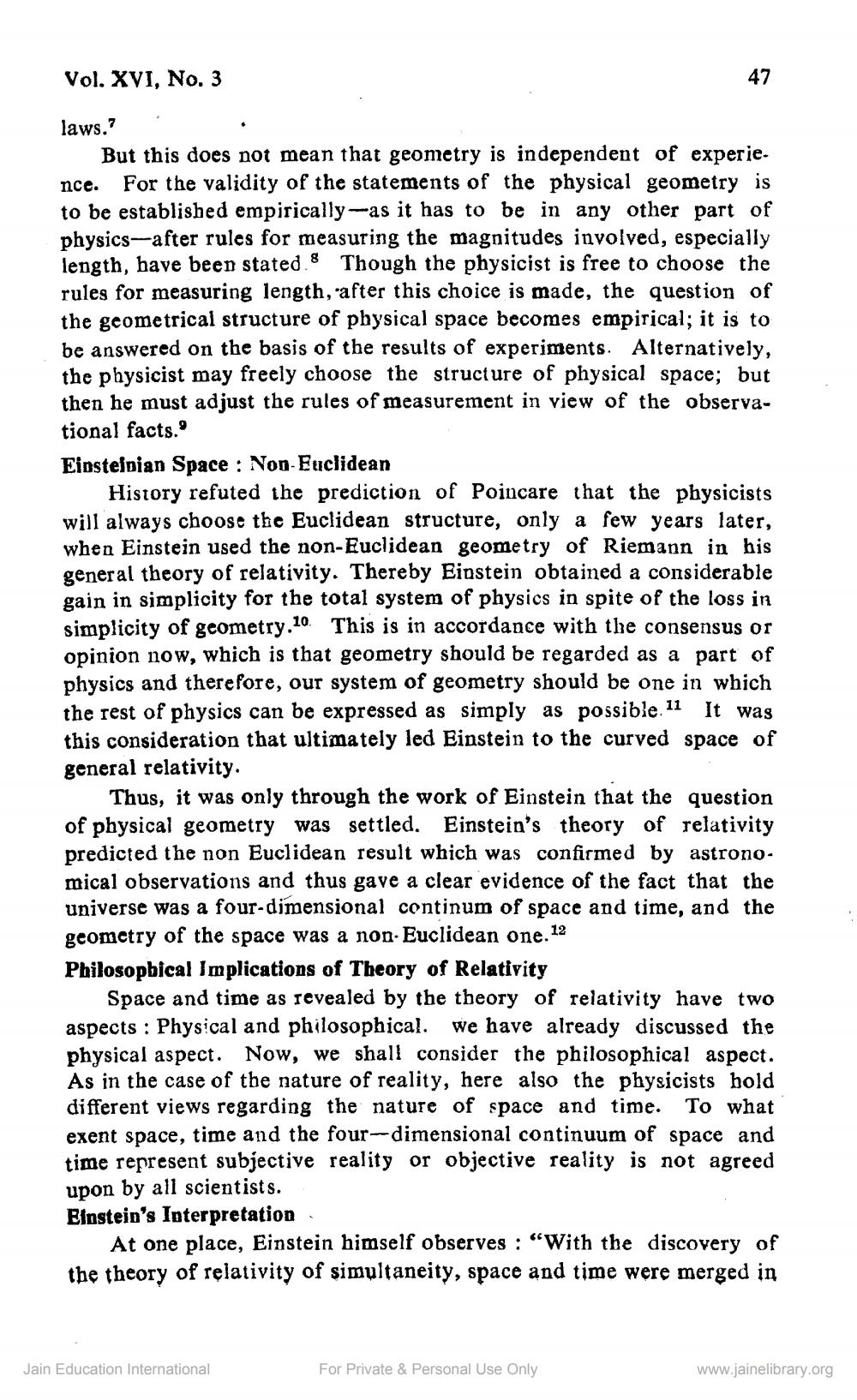________________
Vol. XVI, No. 3
laws.?
But this does not mean that geometry is independent of experie. nce. For the validity of the statements of the physical geometry is to be established empirically-as it has to be in any other part of physics-after rules for measuring the magnitudes involved, especially length, have been stated. 8 Though the physicist is free to choose the rules for measuring length, after this choice is made, the question of the geometrical structure of physical space becomes empirical; it is to be answered on the basis of the results of experiments. Alternatively, the physicist may freely choose the structure of physical space; but then he must adjust the rules of measurement in view of the observational facts. Einsteinian Space : Non-Euclidean
History refuted the prediction of Poincare that the physicists will always choose the Euclidean structure, only a few years later, when Einstein used the non-Euclidean geometry of Riemann in his general theory of relativity. Thereby Einstein obtained a considerable gain in simplicity for the total system of physics in spite of the loss in simplicity of geometry.10. This is in accordance with the consensus or opinion now, which is that geometry should be regarded as a part of physics and therefore, our system of geometry should be one in which the rest of physics can be expressed as simply as possible. 11 It was this consideration that ultimately led Einstein to the curved space of general relativity.
Thus, it was only through the work of Einstein that the question of physical geometry was settled. Einstein's theory of relativity predicted the non Euclidean result which was confirmed by astrono. mical observations and thus gave a clear evidence of the fact that the universe was a four-dimensional continum of space and time, and the geometry of the space was a non-Euclidean one.12 Philosopbical Implications of Theory of Relativity
Space and time as revealed by the theory of relativity have two aspects : Physical and philosophical. We have already discussed the physical aspect. Now, we shall consider the philosophical aspect. As in the case of the nature of reality, here also the physicists hold different views regarding the nature of space and time. To what exent space, time and the four-dimensional continuum of space and time represent subjective reality or objective reality is not agreed upon by all scientists. Einstein's Interpretation
At one place, Einstein himself observes : "With the discovery of the theory of relativity of simultaneity, space and time were merged in
Jain Education International
For Private & Personal Use Only
www.jainelibrary.org




